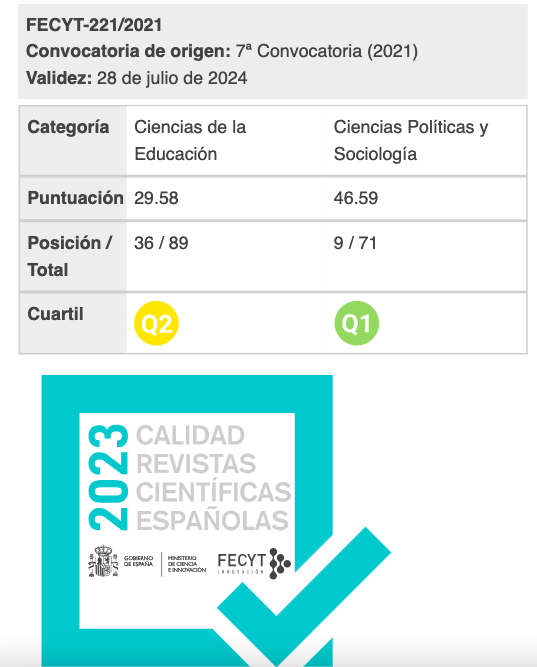Modeling Class Size Effects Across the Achievement Distribution
Keywords:
Downloads
Abstract
Previous findings from Project STAR have highlighted the benefits of being in small classes in early grades on average. Here, we examined the differential “value-added” effects of small classes across the achievement distribution. We find that once previous grade achievement and small class membership are controlled for, small class effects are by and large insignificant. Although high-achievers benefited more from small classes in third grade reading, overall, the differential small class effects were not systematic. Findings from longitudinal analyses failed to show that being in small classes for two or more years is as beneficial as being in small classes for only one year. Although the cumulative small class effects are positive, significant, and meaningful in magnitude, they do not indicate which grade (or grades) are the most important.
Downloads
References
Angrist, J. D., & Lavy, V. (1999). Using Maimonides’ Rule to Estimate the Effect Of Class Size On Scholastic Achievement. Quarterly Journal of Economics, 114, 533–575.
Google Scholar CrossrefAngrist, J., Imbens, G. W., & Rubin, D. B. (1996). Identification of causal effects using instrumental variables. Journal of the American Statistical Association, 91, 444-472.
Google Scholar CrossrefBuchinsky, M. (1998). Recent advances in quantile regression models: A practical guideline for empirical research. Journal of Human Resources, 33, 89-126.
Google Scholar CrossrefFinn, J D., & Achilles, C. M. (1990). Answers and questions about class size: A statewide
Google Scholar Crossrefexperiment. American Educational Research Journal, 27, 557-577.
Google Scholar CrossrefFinn, J D., Gerber, S. B., Achilles, C. M., & Boyd-Zaharias, J. (2001). The enduring effects of
Google Scholar Crossrefsmall classes. Teachers College Record, 103, 145-183.
Google Scholar CrossrefGlass, G. V., Cahen, L.S., Smith, M. E., & Filby, N. N. (1982). School class size: Research and
Google Scholar Crossrefpolicy. Beverly Hills, CA: Sage.
Google Scholar CrossrefGlass, G. V., & Smith, M. E. (1979). Meta-analysis of research on class size and achievement.
Google Scholar CrossrefEducational Evaluation and Policy Analysis, 1, 2-16.
Google Scholar CrossrefGreenwald, R., Hedges, L. V., & Laine, R. D. (1996). The effects of school resources on student
Google Scholar Crossrefachievement, Review of Educational Research, 66, 361-396.
Google Scholar CrossrefHanushek, E. A. (1989). The impact of differential expenditures on school performance.
Google Scholar CrossrefEducational Researcher, 18, 45-51.
Google Scholar CrossrefHanushek, E. A. (1999). Some findings from an independent investigation of the Tennessee
Google Scholar CrossrefSTAR experiment and from other investigations of class size effects. Educational
Google Scholar CrossrefEvaluation and Policy Analysis, 21, 143-163.
Google Scholar CrossrefHao, L., & Naiman, D. Q. (2007). Quantile Regression. Thousand Oakes, CA: Sage.
Google Scholar CrossrefHoxby, C. M. (2000). The effects of class size on student achievement: New evidence from
Google Scholar Crossrefpopulation variation. Quarterly Journal of Economics, 115, 1239-1285.
Google Scholar CrossrefKoenker, R., & Bassett, G. (1978). Regression quantiles. Econometrica, 46, 33-50.
Google Scholar CrossrefKonstantopoulos, S. (2008). Do small classes reduce the achievement gap between low and high
Google Scholar Crossrefachievers? Evidence from Project STAR. Elementary School Journal, 108, 275-291.
Google Scholar CrossrefKonstantopoulos S, & Chung, V. (2009). What are the long-term effects of small classes on the
Google Scholar Crossrefachievement gap? Evidence from the Lasting Benefits Study. American Journal of
Google Scholar CrossrefEducation, 116, 125-154.
Google Scholar CrossrefKonstantopoulos, S. (2011). How consistent are class size effects? Evaluation Review, 35,
Google Scholar Crossref-92.
Google Scholar CrossrefKrueger, A. B. (1999). Experimental estimates of education production functions.
Google Scholar CrossrefQuarterly Journal of Economics, 114, 497-532.
Google Scholar CrossrefMilesi, C., & Gamoran, A.(2006). Effects of Class Size and Instruction on Kindergarten Achievement. Educational Evaluation and Policy Analysis, 28, 287–313.
Google Scholar CrossrefNye, B., Hedges, L.V., & Konstantopoulos, S. (2000a). Effects of small classes on academic
Google Scholar Crossrefachievement: The results of the Tennessee class size experiment. American Educational
Google Scholar CrossrefResearch Journal, 37, 123-151.
Google Scholar CrossrefNye, B., Hedges, L.V., & Konstantopoulos, S. (2000b). Do the disadvantaged benefit from the
Google Scholar Crossrefsmall classes? Evidence from the Tennessee class size experiment. American Journal of
Google Scholar CrossrefEducation, 109, 1-26.
Google Scholar CrossrefNye, B., Hedges, L.V., & Konstantopoulos, S. (2002). Do low achieving students benefit more
Google Scholar Crossreffrom small classes? Evidence from the Tennessee class size experiment. Educational
Google Scholar CrossrefEvaluation and Policy Analysis, 24, 201-217.
Google Scholar CrossrefNye, B., Hedges, L.V., & Konstantopoulos, S. (2004). Do minorities experience larger lasting
Google Scholar Crossrefbenefits from small classes? Evidence from a five-year follow-up of theTennessee class
Google Scholar Crossrefsize experiment. Journal of Educational Research, 98, 94-100.
Google Scholar CrossrefPong, S., & Pallas, A. (2001). Class Size and Eighth-Grade Math Achievement in The United States and Abroad. Educational Evaluation and Policy Analysis, 23, 251–273.
Google Scholar CrossrefDownloads
Published
Almetric
Dimensions
How to Cite
Issue
Section
License
All articles are published under Creative Commons copyright (CC BY). Authors hold the copyright and retain publishing rights without restrictions, but authors allow anyone to download, reuse, reprint, modify, distribute, and/or copy articles as the original source is cited.















